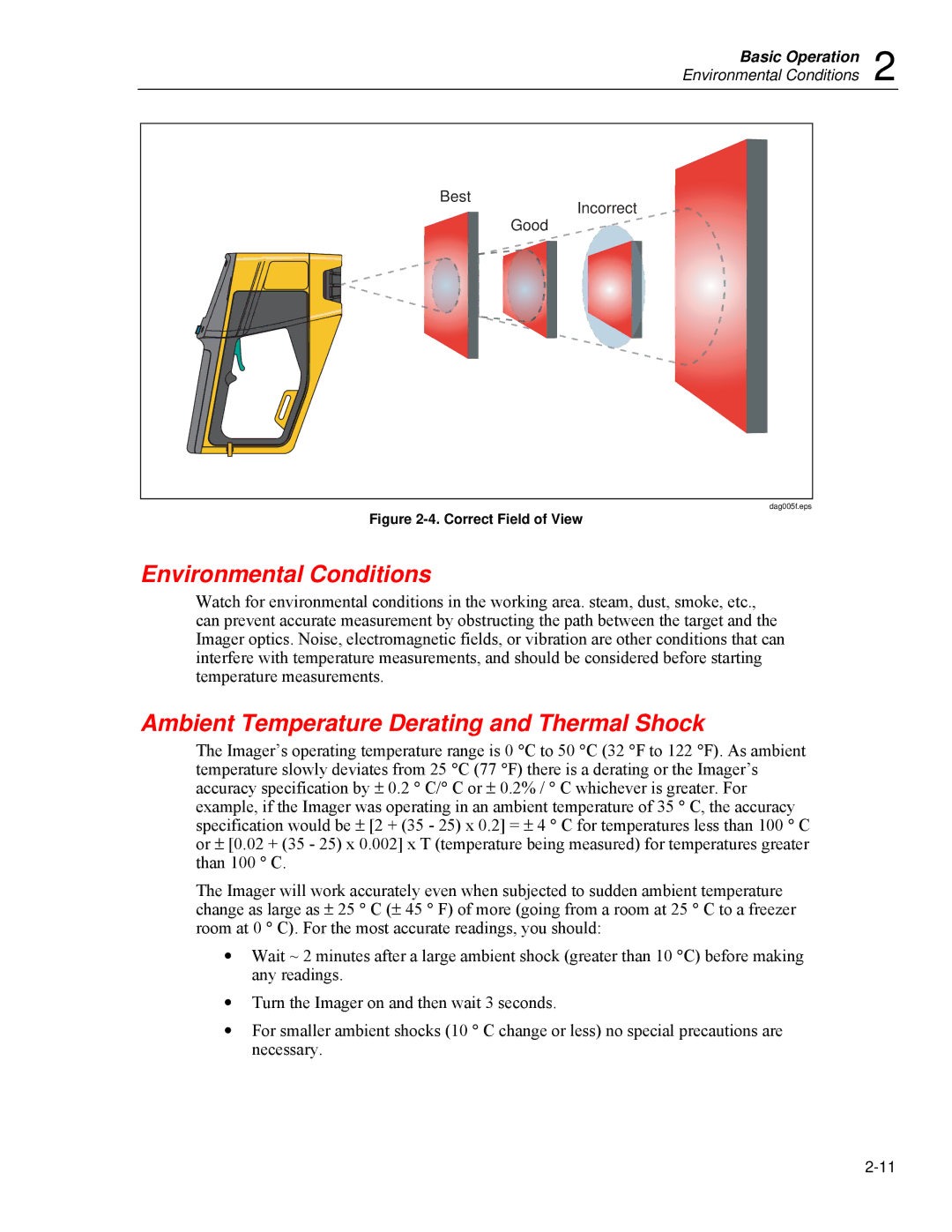
Basic Operation 2
Environmental Conditions
Best
Incorrect
Good
dag005f.eps
Figure 2-4. Correct Field of View
Environmental Conditions
Watch for environmental conditions in the working area. steam, dust, smoke, etc., can prevent accurate measurement by obstructing the path between the target and the Imager optics. Noise, electromagnetic fields, or vibration are other conditions that can interfere with temperature measurements, and should be considered before starting temperature measurements.
Ambient Temperature Derating and Thermal Shock
The Imager’s operating temperature range is 0 °C to 50 °C (32 °F to 122 °F). As ambient temperature slowly deviates from 25 °C (77 °F) there is a derating or the Imager’s accuracy specification by ± 0.2 ° C/° C or ± 0.2% / ° C whichever is greater. For example, if the Imager was operating in an ambient temperature of 35 ° C, the accuracy specification would be ± [2 + (35 - 25) x 0.2] = ± 4 ° C for temperatures less than 100 ° C or ± [0.02 + (35 - 25) x 0.002] x T (temperature being measured) for temperatures greater than 100 ° C.
The Imager will work accurately even when subjected to sudden ambient temperature change as large as ± 25 ° C (± 45 ° F) of more (going from a room at 25 ° C to a freezer room at 0 ° C). For the most accurate readings, you should:
•Wait ~ 2 minutes after a large ambient shock (greater than 10 °C) before making any readings.
•Turn the Imager on and then wait 3 seconds.
•For smaller ambient shocks (10 ° C change or less) no special precautions are necessary.
